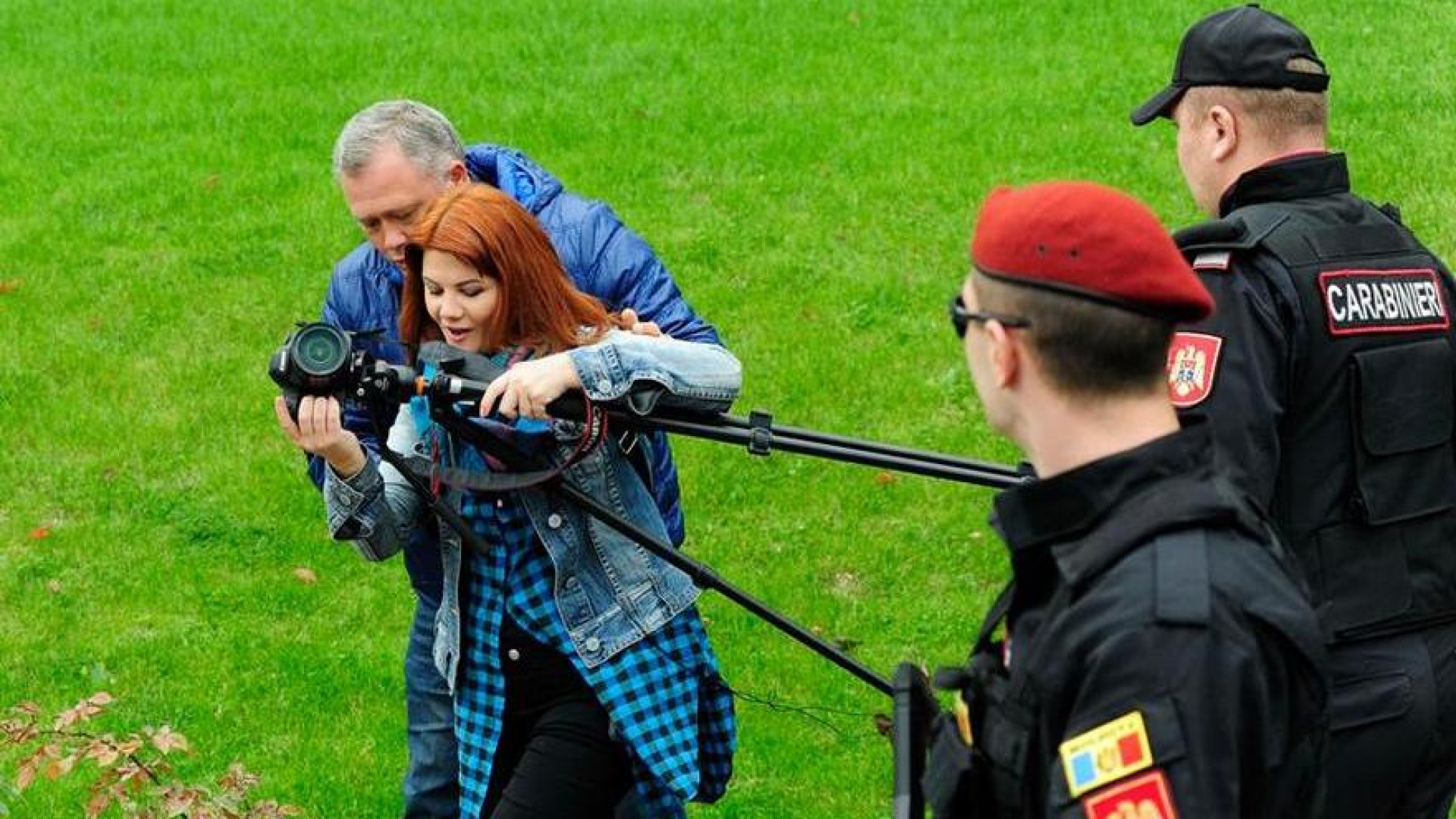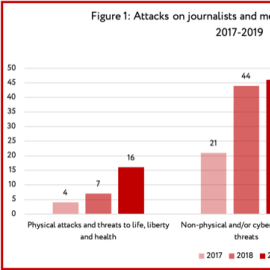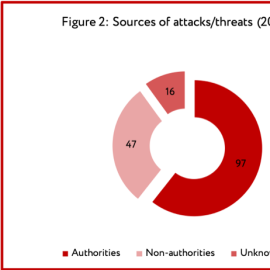back
Attacks on journalists in 2017-2019: total number of threats doubled, physical attacks quadrupled

August 21, 2018: The Carabinieri prevent Viorica Tataru (Ziarul de Garda) from filming in the "access area for officials" during a rally. (Photo: Andrei Mardari)
On May 3, 2020, World Press Freedom Day, the London, UK-based international Justice for Journalists Foundation, in partnership with the Independent Press Association (IPA) and other organizations and experts in Armenia and Georgia, released a report on attacks on media contributors in Armenia, Georgia and Moldova in 2017-2019.
The analysis methodology, developed by the Justice for Journalists Foundation, includes three main types of attacks against media workers (which are further divided into subcategories):
-
Physical attacks and threats to life, liberty and health.
-
Non-physical and/or cyberspace attacks and threats.
-
Attacks using legal and/or economic mechanisms.
Regarding the situation in the Republic of Moldova, the authors of the report note the following:
-
Over three years, at least 159 direct physical and non-physical attacks and threats have been recorded, with the number of attacks doubling over three years (33 cases in 2017; 64 cases in 2018 and 62 cases in 2019).
-
There is a direct correlation between political events and protests in the country and the number of attacks/threats against media contributors. Thus, the peak moments of political crises in recent years - August 2018 (especially 26 August 2018) and June 2019 (especially 8 and 9 June 2019) - were the most dangerous for the work of journalists in Moldova.
-
The most frequent forms of intimidation and harassment of media contributors in Moldova were attacks and threats of a non-physical nature and/or in cyberspace.
-
The number of physical attacks and/or threats to the life, liberty and health of journalists increased fourfold: from 4 cases in 2017 to 16 cases in 2019 (including 12 cases between 8-9 June 2019, during the political crisis in the country)
-
The most common methods of non-physical attacks/threats were illegal obstruction of journalistic activities; discrediting, spreading slander against media and their employees, including in cyberspace; surveillance for intimidation, illegal interception of conversations, etc.
-
The main source of attacks/threats against media contributors were representatives of the authorities. Thus, in 60% of cases, attacks and threats against media employees came from government and/or local/regional officials, police officers, security agents or private security companies employed by authorities/officials, who prevented journalists from carrying out their professional duties, in some cases resorting to violence. In 10% of cases, it was not possible to determine the exact perpetrator of the threat, but there is evidence that some of these attacks were carried out at the behest of politicians or officials.
-
In order to intimidate undesirable journalists and newsrooms, discrediting campaigns take place in cyberspace, media contributors are intimidated, threatened with violence against them and their family members, websites and social media profiles are cloned, etc. Numerous coordinated discrediting and intimidation campaigns against influential journalists took place in 2018. Most of the time, the attacks and threats were initiated by politicians who were unhappy with the journalistic materials of these journalists and their civic work.
-
There were also at least 21 cases (13% of the total) where media institutions were attacked using legal and/or economic mechanisms.
-
In 2017-2019, most attacks were recorded against the weekly newspaper Ziarul de Gardă (29 cases), the TV stations Jurnal TV (19 cases) and TV8 (18 cases).
It should be noted that some attacks and threats are not made public and are not reflected in the media, as many journalists consider attacks in cyberspace and non-physical threats to be an unavoidable part of their professional work and therefore do not report them.
The Media Risk Map in English and Russian is being updated on the website of the Justice for Journalists Foundation.
The Russian version of the report can be downloaded HERE.
The English version of the report can be downloaded HERE.



